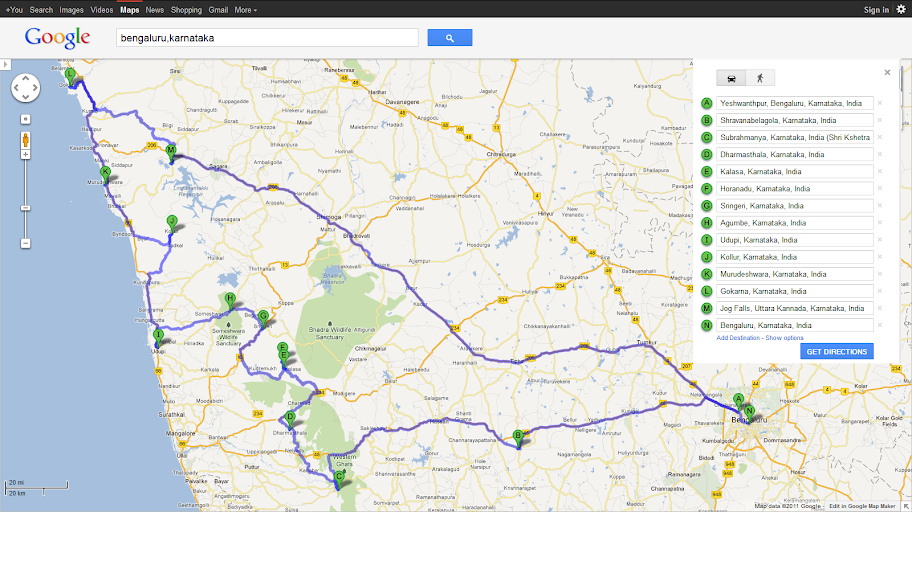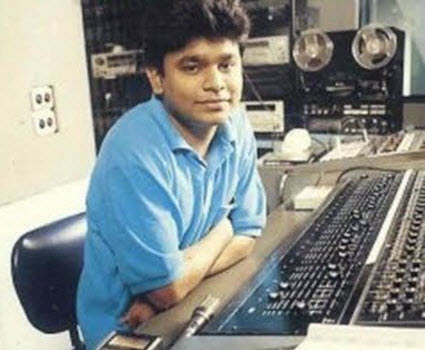Be it a Holiday trip or a trekking challenge or a relaxing vacation, it’s always a great feel/reminiscence to write a post about our experience. Whenever I plan for a trip, I always read many blogs, to get info about routes, weather, Hotels, Transport etc. So many blogs had helped me in planning a great trip to Karnataka. I should thank all these bloggers for their useful info. I feel I can reciprocate my gratitude, by sharing my experience too 🙂
I conceived this thought about a trip to Karnataka somewhere around the month of September. But didn’t work on that much. December last week is a year-end shutdown in my organization. Employees have to apply mandatory leaves from 26th to 30th of December. 24th, 25th, 31st of DEC and 1st of Jan being Saturdays and Sundays, we get totally 10 days of rest from work. The plan was to start on 24th of December and return home on 30th of December.
I started plotting the places to visit on Google maps and connected them all using “Get Directions”. I saw a lot of retracing when I connected them initially. Then I formed a logical circuit by moving up and down the destination points[sorry back and forth] in the Google maps and reached a place where there is minimal/no retracing.
Note : Please click on the above image to generate the Google map for you
Day 0 : 24-12-2011
11:10PM – Start by Yeshwantpur Express from Chennai to Yeshwantpur. [Tickets were available only for Yeshwantpur.]
Day 1 : 25-12-2011
6:00 AM – As per prior booking, the cab will pick us from yeshwantpur railway station and reach my father’s Guest house at bengaluru City Junction
8:00 AM – After refreshing, start to kukke subramanya after having break fast
3:00 PM – Reach Kukke subramanya, have dharshan
5:00 PM – start to Dharmasthala
6:30 PM – reach Dharmasthala and check in a Hotel.
Day 2: 26-12-2011
6:00 AM – Have dharshan @ Dharmasthala temple
9:00 AM – Head towards Horanadu
11:00 AM- Reach Horanadu and have darshan
1:00 PM- Start to Sringeri
3:00 PM- Reach Sringeri
4:00 PM- Finish Darshan in Sringeri and start to Agumbe and stay near Agumbe or stay @ sringeri itself.
Day 3: 27-12-2011
7:00 AM – start to Udupi
9:00 AM – Have breakfast in Udupi
12:01 PM- Start to Kollur
3:00 PM- Have Darshan @ Kollur, and head to Murudeshwar
6:00 PM -Reach Murudeshwar and then stay @ Murudeshwar
Day 4 -28-12-2011
7:00 AM – Have Darshan @ Murudeshwar
9:00 AM – Have breakfast and then leave for jog falls
12:01 PM – Reach Jog falls – spend few hours, Have lunch
17:00 PM – start from Jog falls and reach Arsikare
Day 5 -29-12-2011
7:00 AM – start towards Bengaluru after having breakfast
12:00 Noon – Reach Bengaluru and rest of the day for shopping if possible:)
Day 6 -30-12-2011
6:00 AM- Start to Chennai by Lalbagh Express
Watch out my next post for my real experience and photographs. I felt I can split my plan and the real experience in two posts so that post will not too long. Also the readers don’t get bored going through a lengthy post on a blog.




Recent Comments